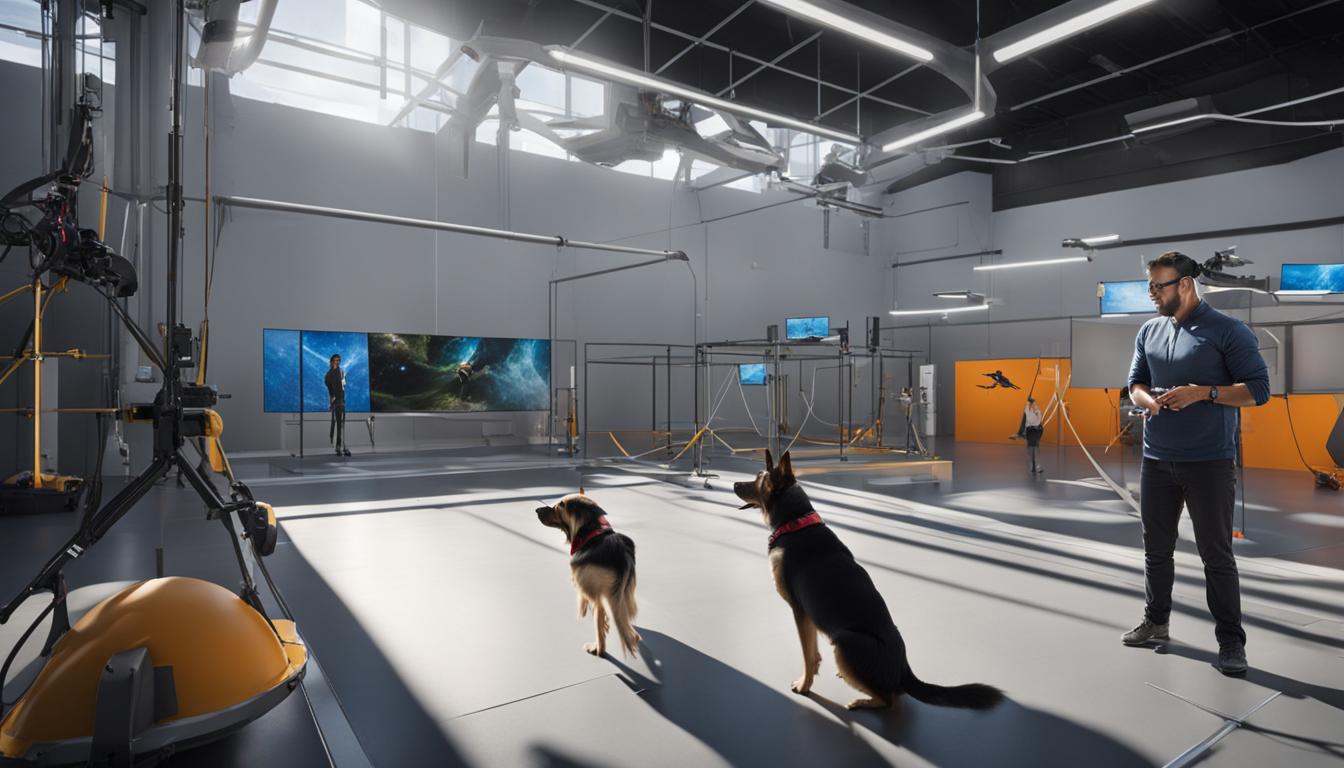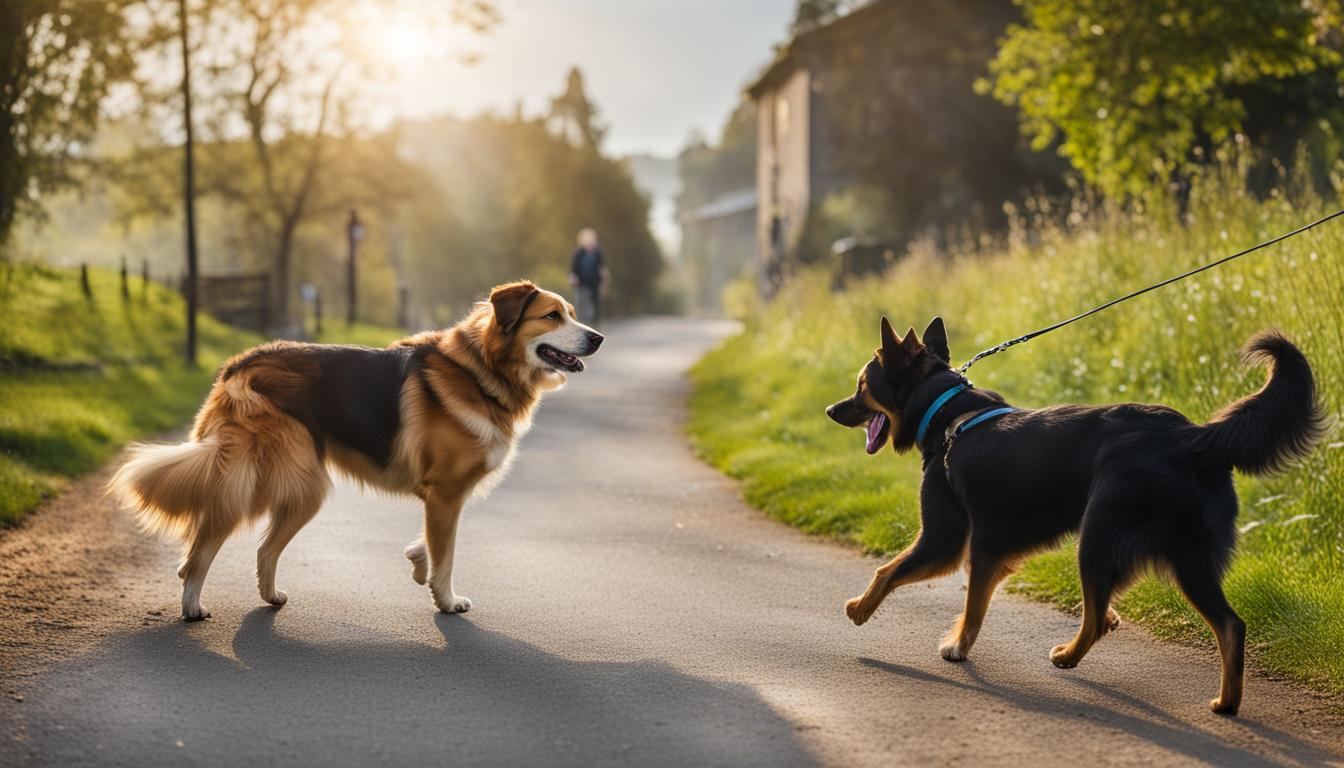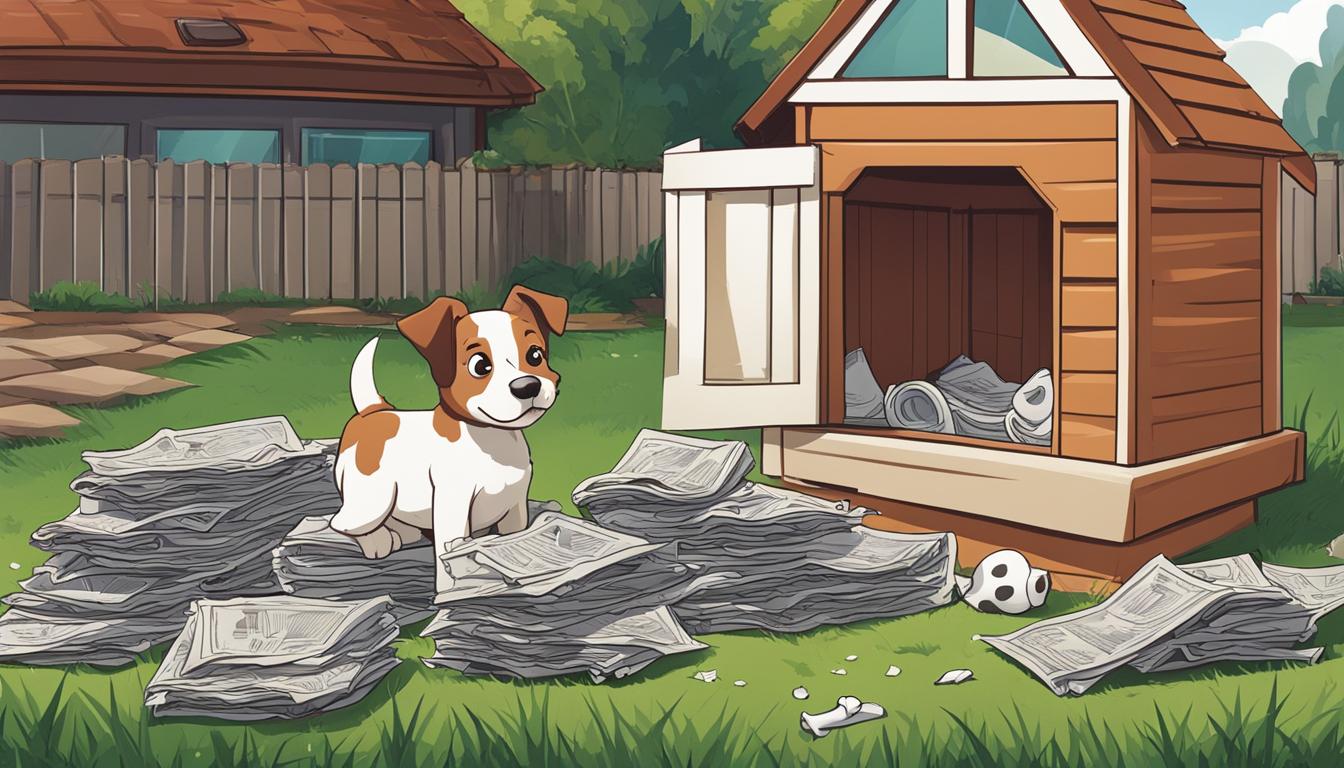Is your furry friend feeling stressed or anxious? As a dog owner, it’s essential to understand how to help your canine companion find peace in stressful situations. Whether it’s loud environments, travel anxiety, or separation stress, there are effective techniques that can calm your dog naturally.
Calming stressed dogs requires a multi-faceted approach. While calming supplements can be beneficial, they should be used in conjunction with behavior modification plans. Dogs are highly influenced by their owners’ emotions and body language, so creating a calm environment and understanding the cause of reactive behavior are crucial. In addition, techniques such as playing calming music, providing sufficient sleep, and avoiding direct eye contact can help your dog relax.
One technique that has shown great success in calming dogs is massage. Just like humans, dogs can benefit from the soothing touch and gentle strokes that massage provides. A skilled canine masseuse can help your dog release tension and find a sense of calm within themselves.
Key Takeaways:
- Calming stressed dogs requires a multi-faceted approach
- Create a calm environment and understand the cause of reactive behavior
- Calming music, sufficient sleep, and averted eye contact can help calm dogs
- Consider incorporating massage into your dog’s routine for relaxation
- Consult with a veterinarian or behaviorist for professional guidance
Tips for Calming Dogs Down: A Step-by-Step Guide
If you’ve ever witnessed your dog struggling to remain calm in stressful situations, you understand the importance of finding effective techniques to help them relax. Whether it’s managing their stress in loud environments or finding solutions for travel anxiety, it’s crucial to have a step-by-step guide to help calm your furry friend. With the right approach, you can create a peaceful environment and teach your dog relaxation techniques that will benefit them in various situations.
To start, establishing a solid foundation of natural rest at home is essential. Providing a quiet and safe space allows your dog to unwind and relax. Avoiding eye contact and allowing them to choose appropriate behaviors can also help them calm down. Additionally, gentle touch in specific areas of their body, such as behind the ears or on their chest, can have a soothing effect.
Another crucial aspect of calming your dog down is through positive reinforcement. Taking them for calm walks and using gentle verbal praise for their good behavior can reinforce positive actions. Stepping in and gently redirecting them when they jump up can also help them calm down and learn appropriate ways to express themselves. If necessary, removing yourself from the situation and giving them space can help alleviate anxiety.
Table: Relaxation Training Techniques for Dogs
| Technique | Description |
|---|---|
| Creating a Calm Environment | Provide a quiet and safe space for your dog to relax and unwind. |
| Avoiding Eye Contact | By avoiding eye contact, you can help your dog calm down and feel less threatened. |
| Gentle Touch | Using gentle touch in specific areas of your dog’s body, such as behind the ears or on their chest, can have a soothing effect. |
| Positive Reinforcement | Take your dog for calm walks and use gentle verbal praise to reinforce positive behaviors. |
| Stepping In and Redirecting | Gently step in and redirect your dog when they jump up, teaching them appropriate ways to express themselves. |
| Providing Space | If necessary, remove yourself from the situation and give your dog space to help alleviate anxiety. |
Walking your dog away from triggers and gradually desensitizing them can also aid in calming their anxieties. By exposing them to their triggers in a controlled manner and rewarding them for calm behavior, you can help them overcome their fears and anxieties over time.
Remember, each dog is unique, and what works for one may not work for another. Finding the right combination of techniques and approaches for your dog takes time and patience. By implementing these tips and staying consistent, you can help your furry friend find their inner calm and navigate stressful situations more peacefully.

Seeking Professional Help: When to Consult a Veterinarian or Behaviorist
Dealing with stress in shelter dogs, stress relief toys for dogs, and reducing separation stress in dogs can be challenging tasks. While there are various techniques and approaches that pet owners can try, it’s essential to know when it’s time to seek professional help from a veterinarian or behaviorist. These experts can provide valuable guidance and support in managing and alleviating stress in dogs.
If your dog is displaying signs of anxiety, such as excessive barking, destructive behavior, or aggression, it is crucial to consult a veterinarian. They can rule out any underlying medical issues that may be contributing to your dog’s stress. In some cases, anxiety medication may be prescribed to help your dog manage their emotions effectively.
Board-certified veterinary behaviorists are specialists in treating fear, anxiety, and aggression in pets. They have the knowledge and expertise to identify the root causes of your dog’s stress and develop personalized behavior modification plans. These plans may include desensitization techniques, counter-conditioning exercises, and training to help your dog learn to cope with stressful situations.
An Example Table: Different Stress Relief Toys for Dogs
| Name | Description | Benefits |
|---|---|---|
| Kong Classic | A durable rubber toy that can be stuffed with treats or peanut butter. | Provides mental stimulation, distracts from stress, and promotes relaxation. |
| Snuggle Puppy | A plush toy with a heat pack and a simulated heartbeat to mimic a mother’s presence. | Offers comfort and reduces separation anxiety in puppies and newly adopted dogs. |
| Puzzle Toys | Toys with hidden compartments or challenges that require problem-solving skills to access treats. | Engages the dog’s mind, relieves boredom, and reduces anxiety. |
Alongside professional help, there are additional strategies you can implement at home. Calming products, such as body wraps, pheromone diffusers, and calming music, can create a soothing environment for your dog. Creating a sanctuary space with comfortable bedding and toys can provide a safe retreat for them to relax and unwind.
Reducing separation stress in dogs can be particularly challenging. Providing stress relief toys and interactive activities can help alleviate their anxiety when left alone. It’s important to gradually accustom your dog to being alone by practicing short absences and gradually increasing the duration over time.

Desensitization Training
Desensitization training involves gradually exposing dogs to triggers or situations that cause anxiety. By slowly introducing these stimuli in a controlled and positive manner, you can help your dog become more comfortable and less reactive over time.
Quiet Breaks in a Safe Space
Creating a designated safe space for your dog where they can retreat and relax is essential. Provide a quiet area with comfortable bedding, toys, and a calming environment. This will give them a sense of security and a place to unwind when they feel overwhelmed.
Calming Supplements and Music
There are natural calming supplements available that can support your dog’s emotional well-being. Some herbal remedies and pheromone products can help reduce anxiety. Additionally, playing calming music specifically designed for dogs can have a soothing effect and promote relaxation.
Alternative Therapies for Calming Dogs
If you’re looking for additional ways to calm your dog in stressful situations, alternative therapies can be a great option. These techniques can provide unique and holistic approaches to help your canine companion find peace and relaxation. From acupuncture to Feng Shui, there are various methods to explore. Let’s take a closer look at some alternative therapies for calming dogs.
Acupuncture:
Acupuncture is a traditional Chinese medicine practice that involves inserting thin needles into specific points on the body. This technique can produce a calming effect and help restore the balance of energy within your dog’s body. Acupuncture is often used in combination with Chinese herbs to enhance its therapeutic benefits.
Feng Shui:
Feng Shui is the art of arranging a space to create harmony and balance. By applying Feng Shui principles in your home, you can create a calming environment for your dog. This involves optimizing the flow of energy, decluttering the space, and incorporating natural elements that promote relaxation.
While alternative therapies can be beneficial, it’s important to remember that every dog is unique. What works for one may not work for another. It’s essential to consult with a professional and seek their guidance before implementing any alternative therapy.
| Alternative Therapy | Benefits |
|---|---|
| Acupuncture | Produces a calming effect and restores energy balance |
| Feng Shui | Creates a harmonious and calming environment |
Using alternative therapies such as acupuncture and Feng Shui can provide additional tools and techniques to calm your dog in stressful situations. These holistic approaches take into account the mind-body connection and aim to restore balance and well-being. Remember to always consult with a professional to ensure the safety and effectiveness of these therapies for your specific dog.
Conclusion
Calming stressed dogs and relaxing anxious dogs is a goal that every pet owner can achieve with the right techniques and approaches. By understanding the signs of anxiety and identifying triggers, you can take proactive steps to alleviate stress in your furry friend.
Seeking professional help from veterinarians and behaviorists can provide additional guidance and support. These experts can assess your dog’s needs, rule out any underlying medical issues, and offer effective strategies for reducing anxiety.
Natural and holistic approaches, as well as alternative therapies, can also play a significant role in calming dogs. From physical contact and regular exercise to music therapy and calming supplements, there are various methods you can try to create a more relaxed environment for your canine companion.
Remember, creating a calm and supportive environment for anxious dogs is key. With patience, consistency, and the right strategies, your dog can learn to handle stressful situations and experience a greater sense of calm and well-being. So, don’t hesitate to explore different techniques and find what works best for your furry friend. Together, you can overcome anxiety and create a peaceful life for your beloved pet.
FAQ
Can calming supplements alone help calm stressed dogs?
Calming supplements can be beneficial, but they should be used in conjunction with behavior modification plans.
How are dogs influenced by their owners’ emotions and body language?
Dogs are highly influenced by their owners’ emotions and body language.
Why is it important to understand the cause of reactive behavior in dogs?
Understanding the cause of reactive behavior is important for supporting dogs.
What can I do to create a calm environment for my dog?
Creating a calm environment can aid in learning and relieve stress.
How can I help calm my dog with music, sleep, and eye contact?
Calming music, sufficient sleep, and averted eye contact can help calm dogs.
Is massage beneficial for calming dogs?
Massage can have a calming effect on dogs.
What is the first step in helping my dog relax and become more balanced?
The first step is to establish a solid base of natural rest at home to help dogs relax and become more balanced.
How can I help my dog relax by allowing them to choose appropriate behaviors?
Avoiding eye contact and allowing dogs to choose appropriate behaviors can help them relax.
Can gentle touch have a calming effect on dogs?
Gentle touch in specific areas of the body can have a calming effect on dogs.
How can I reinforce positive behaviors in my dog?
Taking dogs for calm walks and using gentle verbal praise can reinforce positive behaviors.
How can I help my dog calm down when they jump up?
Stepping in and gently redirecting dogs when they jump up can help them calm down.
What can I do if my dog is displaying signs of anxiety?
If necessary, removing yourself from the situation and giving dogs space can help alleviate anxiety.
How can I gradually desensitize my dog to triggers?
Walking dogs away from triggers and gradually desensitizing them can aid in calming anxieties.
When should I consult a veterinarian for my dog’s anxiety?
It is important to consult a veterinarian if your dog is displaying signs of anxiety.
Can calming products be helpful for anxious dogs?
Calming products such as body wraps, calming supplements, and calming music can be helpful.
How can I create a sanctuary space for my dog?
Creating a sanctuary space for dogs to retreat to can provide comfort and relaxation.
Who can teach me desensitization and behavior modification techniques?
Board-certified veterinary behaviorists are specialists in treating fear, anxiety, and aggression in pets and can teach desensitization and behavior modification techniques.
What can I do to support my dog with separation anxiety?
Supporting dogs with separation anxiety and providing stress relief toys can help alleviate stress.
Can physical contact and touch help calm anxious dogs?
Physical contact and touch, such as petting, can help calm anxious dogs.
How can regular exercise help reduce anxiety in dogs?
Regular exercise can reduce anxiety and promote overall well-being in dogs.
How does desensitization training work?
Desensitization training can gradually expose dogs to triggers and help them feel more comfortable.
How can providing a quiet break help dogs unwind and relax?
Providing a quiet break in a safe space can help dogs unwind and relax.
What natural and holistic approaches can I use to calm my dog?
Calming supplements, including herbs and pheromones, can be beneficial for anxious dogs.
Can alternative therapies help calm anxious dogs?
Alternative therapies such as acupuncture, herbs, and Feng Shui can help calm anxious dogs.
What do veterinary behaviorists specialize in?
Board-certified veterinary behaviorists specialize in treating fear, anxiety, and aggression in pets.
How can I create a calm and supportive environment for my anxious dog?
Creating a calm and supportive environment is important for anxious dogs.
Can addressing and relieving anxiety improve my dog’s overall health?
Addressing and relieving anxiety in dogs can significantly improve their overall health and well-being.
Is it possible to calm stressed dogs and reduce anxiety in dogs?
Calming stressed dogs and reducing anxiety in dogs is possible with the right techniques and approaches.
How can I take steps to alleviate stress in my dog?
By understanding the signs of anxiety and triggers, pet owners can take steps to alleviate stress in their dogs.
When should I seek professional help for my dog’s anxiety?
Seeking professional help from veterinarians and behaviorists can provide additional guidance and support.
Can natural and holistic approaches be effective in calming dogs?
Natural and holistic approaches, as well as alternative therapies, can be effective in calming dogs.





